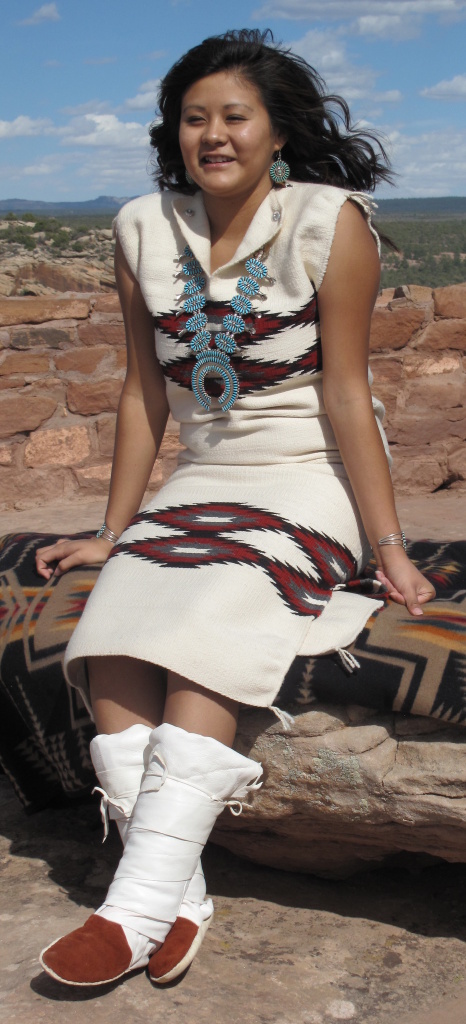There is No Substitute: The Navajo Biil Dress
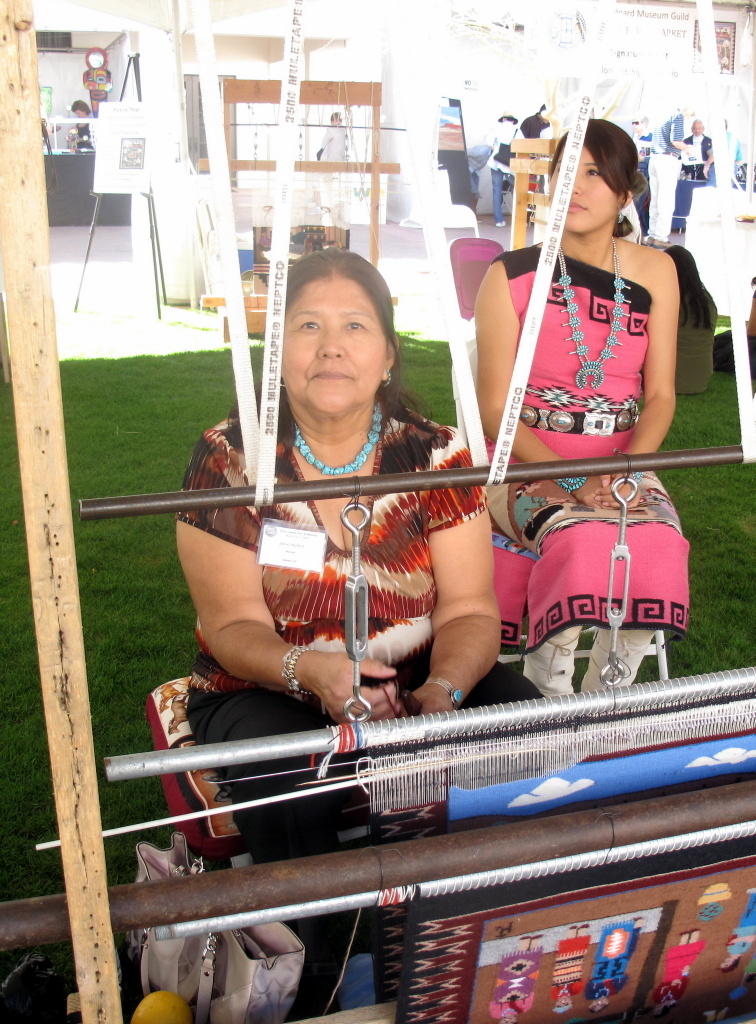
Master weaver Jane Hyden with a young relative wearing a biil dress. Please click to enlarge any image.
Tempe, AZ Frequent commenter Kathleen Bernett asked me for a better picture of what really does look like a pink rug in this picture 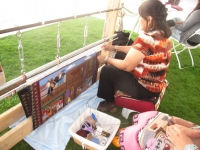 (click to enlarge it) from Sunday’s post about the Heard Museum Indian Fair and Market. It’s not a rug; it’s a dress, I told Kathleen. As you can see in the picture above, the young lady who is seated behind master weaver Jane Hyden is wearing what is called in Navajo a biil (pronounced beel) and it is also referred to as a rug dress. It is composed of two panels, usually warped and woven side by side to ensure that they are identical and then sewn together leaving openings for the neck and arms. There is usually no shaping, but some weavers have adopted the off-shoulder style that you see above. Completing the outfit are a squash blossom necklace, a concho belt and traditional moccasins with deerskin leggings. The poised young lady sitting with Jane said that she felt like a fashion model wearing it. Young Navajo women who are graduating frequently favor this ensemble over the traditional cap and gown, even getting exceptions to school policy to do so. You can see weaver Laramie Blake wearing a biil in her 2010 graduation picture at left.
(click to enlarge it) from Sunday’s post about the Heard Museum Indian Fair and Market. It’s not a rug; it’s a dress, I told Kathleen. As you can see in the picture above, the young lady who is seated behind master weaver Jane Hyden is wearing what is called in Navajo a biil (pronounced beel) and it is also referred to as a rug dress. It is composed of two panels, usually warped and woven side by side to ensure that they are identical and then sewn together leaving openings for the neck and arms. There is usually no shaping, but some weavers have adopted the off-shoulder style that you see above. Completing the outfit are a squash blossom necklace, a concho belt and traditional moccasins with deerskin leggings. The poised young lady sitting with Jane said that she felt like a fashion model wearing it. Young Navajo women who are graduating frequently favor this ensemble over the traditional cap and gown, even getting exceptions to school policy to do so. You can see weaver Laramie Blake wearing a biil in her 2010 graduation picture at left.
The biil is one of only two items that Navajo weavers still produce for their own use and to sell to other Navajos, the other being the sash belt. Although Navajo weavers have been renowned for their blankets for centuries, commercially woven trade blankets by Pendleton, Beacon and other manufacturers replaced the blankets as demand for Navajo rugs grew in the 1890’s. With rare exceptions, wearing blankets are not woven today and when they are, they are acquired by collectors and not used as apparel. TahNiibaa Naataanii, who has produced (and worn) gorgeous contemporary shoulder coverings has seen the lack of a Navajo market for Navajo woven apparel and hopes that one will develop. “It’s really sad.”, Tahniibaa notes wistfully, “It seems like there’s always money for another Pendleton, but we don’t buy what our own weavers produce.” When it comes an important event like a graduation, though, if you’re going to make a statement, only a biil will do. Sometimes at flea markets you see a biil that’s been crocheted or sewn from commercial fabric, but it’s kind of like getting frybread at the Cheesecake Factory. It might look ok, but it doesn’t have the critical success factors of the original product. If there’s any way that a family can do it, a traditionally woven biil is purchased, borrowed or custom ordered for the occasion because it honors the history of the Navajo people and the great-great-grandmothers who made this dress a symbol of the Navajo Nation. And as you’ll see by looking at Laramie Blake in her graduation outfit, it looks really good.
The biil dress was standard clothing for Navajo women before the Long Walk (which began on this date in 1864). It developed from items of Pueblo clothing, from even more historic Navajo clothing and the wool fiber that the Navajos were so proficient at using. The spinning skills possessed by the weavers in those days were astounding and their access to excellent wool was superior to anything that most of us have today. They would sort the wool from the dual coated to Navajo-Churro sheep, using the finest of it to spin yarn that Armani and Versace would drool over. This yarn would be woven into blankets and clothing that would be used and repaired until it could be used no more. Like today’s biil, these older weavings were simple, often with only one or two bands of patterning in an otherwise plain weave. Only a few of these pieces survive and they are usually in museum vaults and not often put on display.
In 2010, the Navajo Nation Museum in Window Rock did arrange an exhibit of one of the most historic biil known to exist, a well worn and patched garment that belonged to Juanita, who was married to the great Navajo negotiator and leader Manuelito. As an older woman, Juanita became friendly with lecturer and journalist George Wharton James. James’ photography and writings help to popularize Native American art and Juanita eventually gave James her dress, which had been woven sometime around 1868 using Navajo-churro and raveled bayeta wool. You can see a picture of Juanita’s dress below.
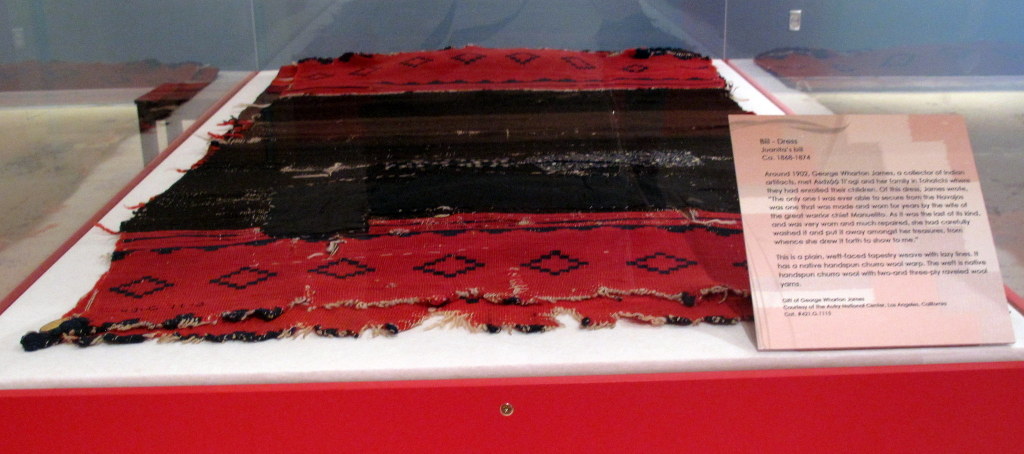
Juanita’s biil dress.
Click on the icon at right to read the small panel.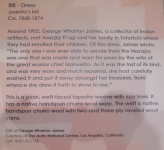
If you read the description, you will note that the term “lazy line” is used. I intensely object to and dislike this term, but will rant about it at some later date.
A resident of California, James donated the dress to the Southwest Museum in Los Angeles when he died and it became part of the collection of the Autry National Center when it acquired the Southwest Museum. A curator travels with the dress when it is loaned to any other institution. You can see that Juanita’s dress shares much with it’s more modern descendants and I’ve included two more pictures below that you can click to enlarge and examine. I know that modern wearers of the biil would love to have something woven from wool as fine as you see in Juanita’s garment, but it probably would make the price even harder to manage! You can read more about the Juanita’s biil and it’s journey home in this article by Juanita’s great-great-great-granddaughter Dr. Jennifer Nez Denetdale. You can see a picture of Juanita wearing the dress here.
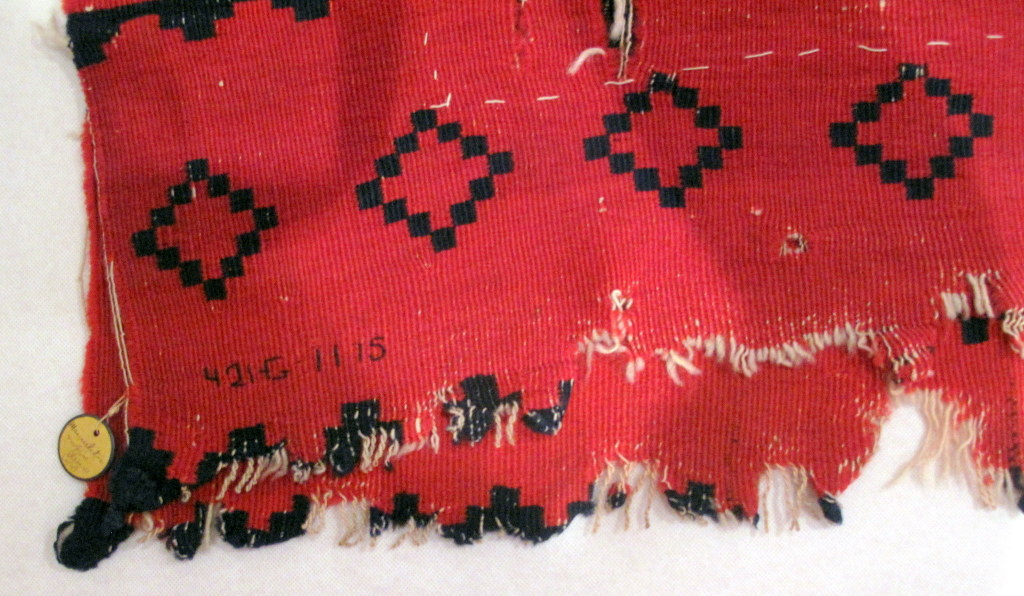 |
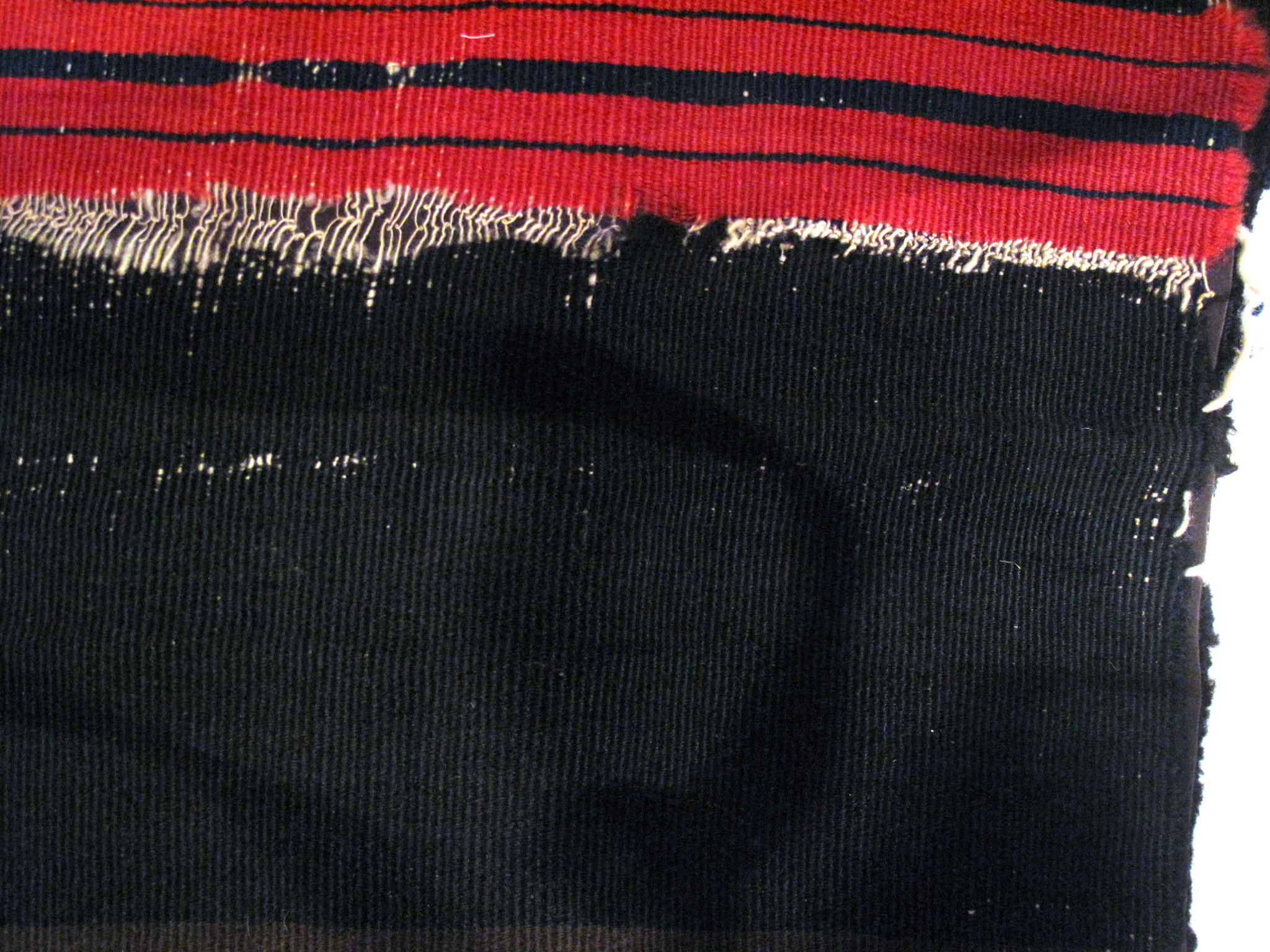 |
| Details of Juanita’s dress (please click to enlarge) | |
Ready to wear a biil? Weaver Nathan Harry announced that he is taking orders for this year’s graduation. Depending on size, he’s quoting a price of about $1200 for a custom woven dress made with commercial wool. I’m not sure what Jane Hyden or Florence Riggs charge, but I know that they took quite a few orders this weekend for their stunning pictorially paneled biils. It seems to me that this is a trend that’s growing so maybe my friend TahNiibaa will get her wish! I don’t think the folks at Pendleton are worried yet, but maybe they should be!
Hagoshíí (so long for now)
Mary Walker
